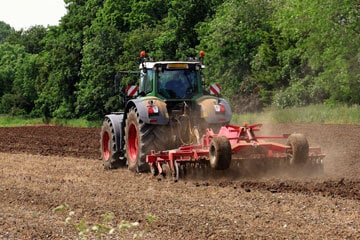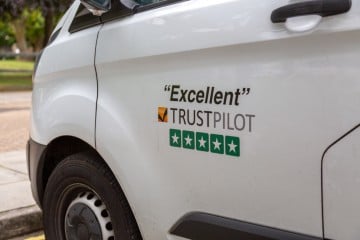Different types of van have varying repair costs and performance. This could have an impact on your van insurance costs, especially if a particular type of van is mostly used for commercial purposes.
Here we take a look at the most common van body types and how you can identify them.

What are the different types of van?
When you compare van insurance with us, we'll ask you, "how would you describe the van's body type?". You can choose from the following options:
- Van
- Pick-up
- Tipper
- Dropside
- Van - Refrigerated
- Vehicle transporter
- Flatbed
- Luton
- Box van
- Curtainside van
- Mobile catering van
- Ice cream van
How does my van's body type affect my insurance costs?
Your van's body type could impact your van insurance costs if it affects:
- The van's performance
- The likelihood of you using your van for business purposes
- The cost of repairs after an accident
Let's look at each of these van body types in detail.
Van
These are usually panel vans, which tend to be low to the ground, making them a good choice for lots of small, light loads. They’re among the most common types of van, so repair costs should be relatively low compared to the more specialised body types.
If you're unsure about what kind of type of van you have, you can select 'Van' when you get a quote.
Pick-up truck
Pick-up trucks have an iconic shape due to their open rear cargo bed. They're useful for hauling materials without the worry of height restrictions.
Pick-up trucks can also come as a 4x4 if you need a little extra power. You can have single cabs with 1 row of seats, or double cabs that have 2 rows. Some trucks come with hard tops to make sure that your cargo is safe, secure and waterproof.
When looking for insurance for your pick-up, its kerb weight needs to be under 2,040kg. This restriction is because pick-up trucks are classed as 'dual-purpose vehicles' that can carry passengers and goods.
Tipper truck
A tipper trick is a flatbed van with a hydraulic arm that allows the front end of the cargo area to rise and the contents to then slide down and off. They’re ideal for cargo that is too big, bulky or heavy to fit inside a panel van.
The side panels can usually be folded down to load goods from either side or the rear of the vehicle.
Dropside van
Some flatbed vans can have their sides dropped for better access. Often, they have hinged gates on the side that allow them to drop easily. They’re good for builders or anyone who needs to transport heavy machinery.
Refrigerated van
Refrigerated vans are used to keep goods below a certain temperature. They’re typically used for food and medication delivery services.
Many models can operate at a range of temperatures, meaning you could have ambient, chilled and even frozen sections.
Vehicle transporter
These are flatbed or box vans that are able to transport a single vehicle. These kinds of vans are often used to transport classic cars to events, or for those in the vehicle recovery business.
Lorries that transport multiple vehicles are classed as heavy goods vehicles (HGV) and so need a dedicated HGV insurance policy.
Flatbed van
Flatbed vans have an open cargo space at the back. They're similar to pickup trucks, but the main difference is that flatbed vans:
- Are longer than pickup trucks
- Have lower sides
- Have a separate cabin area
Flatbed vans are good for hauling tall items and they’re often used in the construction and building trade.
You can get flatbed vans under 3,500kg, but most tend to be heavier than this. You might need an upgraded driving licence to drive them.
Luton and box vans
Both Luton and box vans have closed, raised cargo areas. They're the biggest kind of van you can drive on a standard driver's licence.
Given their size, these vans are useful for large haulage and removals. They’re also popular with couriers or delivery drivers because they can fit large parcels and big, bulky loads.
The difference between a Luton and a box van is that box vans have a separate cargo area from the cabin. Often the cargo area sticks out from the cab and is square or rectangular, giving a huge carrying area. Luton vans, on the other hand, have it all integrated.
Curtainside van
Curtainside vans are box vans with a plastic curtain on the sides to allow forklift trucks to pick up goods. By comparison, most Luton and box vans only allow access from the rear doors.
Curtainside vans are popular with those who need to transport items on pallets, such as wholesale delivery drivers.
Mobile catering and ice cream vans
Both mobile catering and ice cream vans are used for selling food to customers. Some ice cream vans only have a freezer, while others also have a machine to serve soft ice cream.
If you're selling food to the public from your van, you might need to apply for a street trading licence.
Do I need specialist insurance for my van?
Not necessarily. If your van is classed as a light commercial vehicle, you should be able to get a standard van insurance policy for it. You can compare van insurance quotes for all the types of van we've listed.
Compare cheap van insurance quotes
Get a quote






